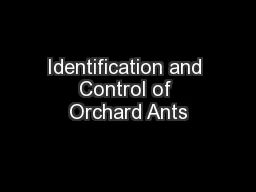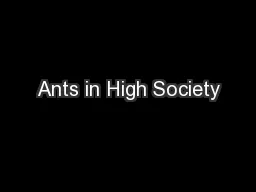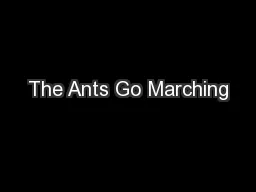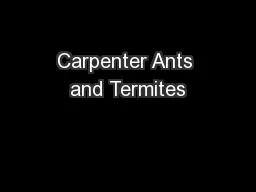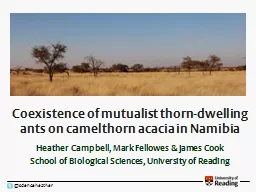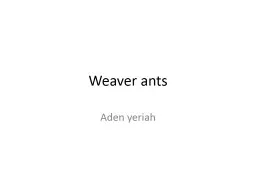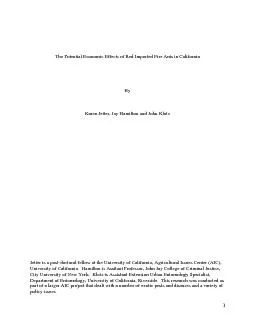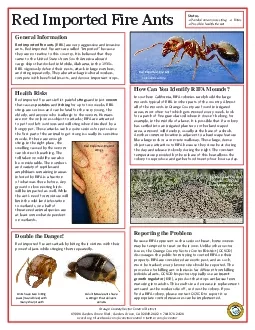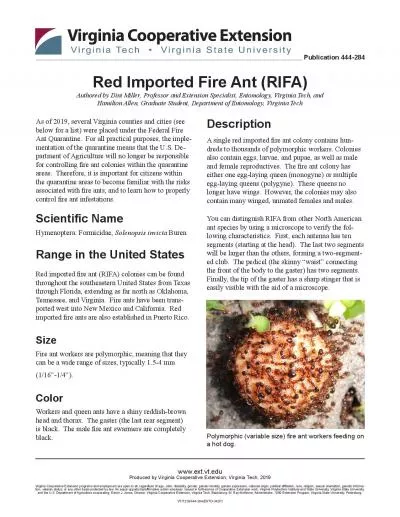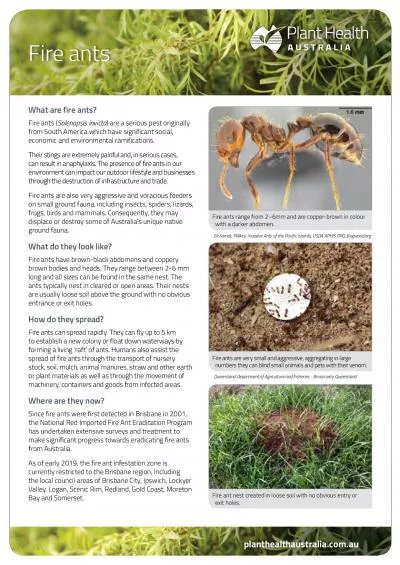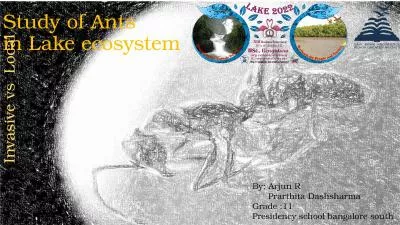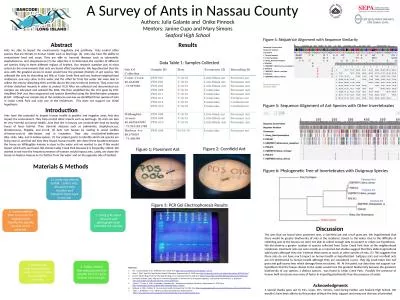PDF-Managing Fire Ants in Urban Areas
Author : morton | Published Date : 2022-09-22
Properly identifying the ant species is the first step in determining whether and how to control them see Fire Ant Biology and Identification No management is
Presentation Embed Code
Download Presentation
Download Presentation The PPT/PDF document "Managing Fire Ants in Urban Areas" is the property of its rightful owner. Permission is granted to download and print the materials on this website for personal, non-commercial use only, and to display it on your personal computer provided you do not modify the materials and that you retain all copyright notices contained in the materials. By downloading content from our website, you accept the terms of this agreement.
Managing Fire Ants in Urban Areas: Transcript
Download Rules Of Document
"Managing Fire Ants in Urban Areas"The content belongs to its owner. You may download and print it for personal use, without modification, and keep all copyright notices. By downloading, you agree to these terms.
Related Documents


